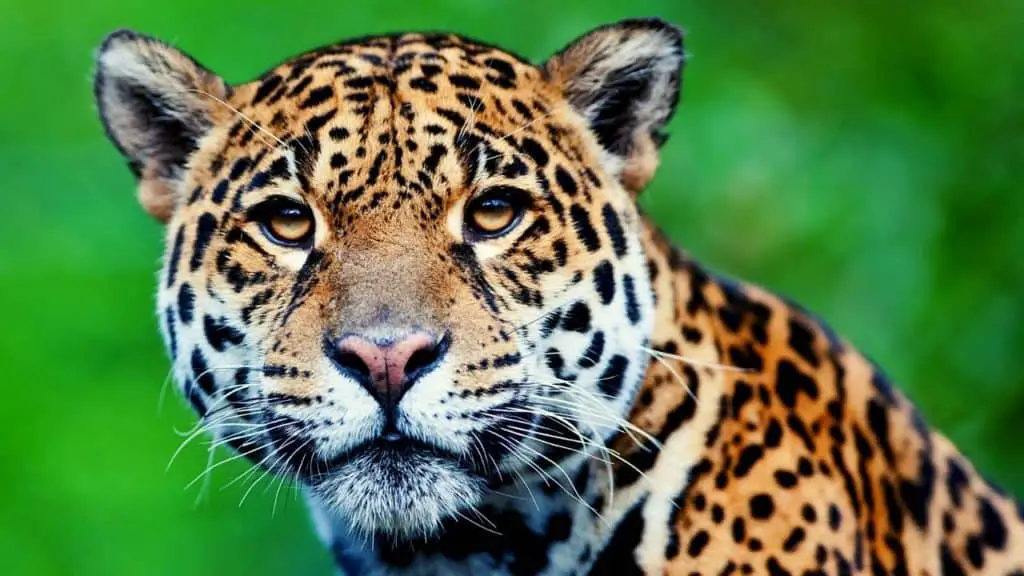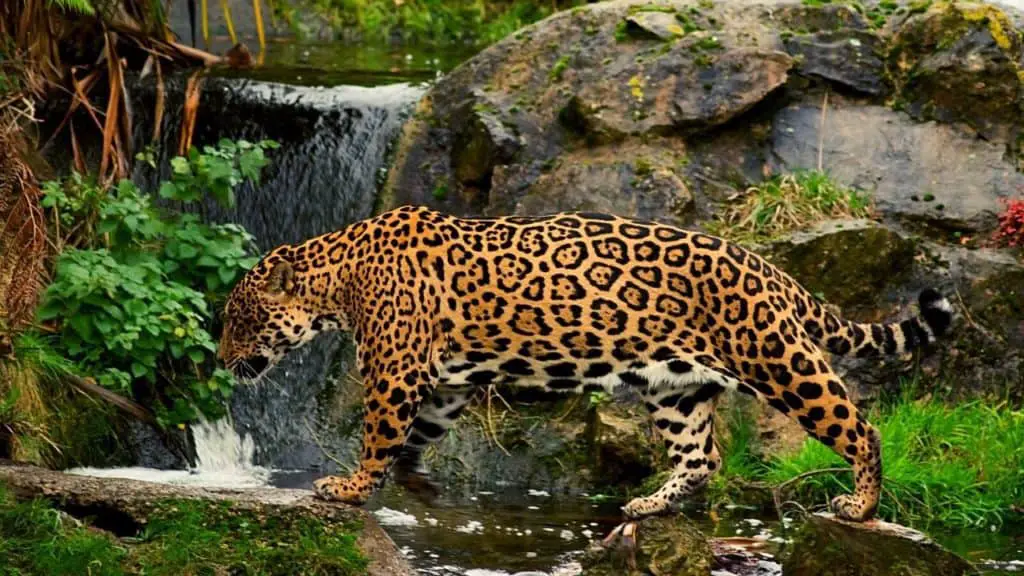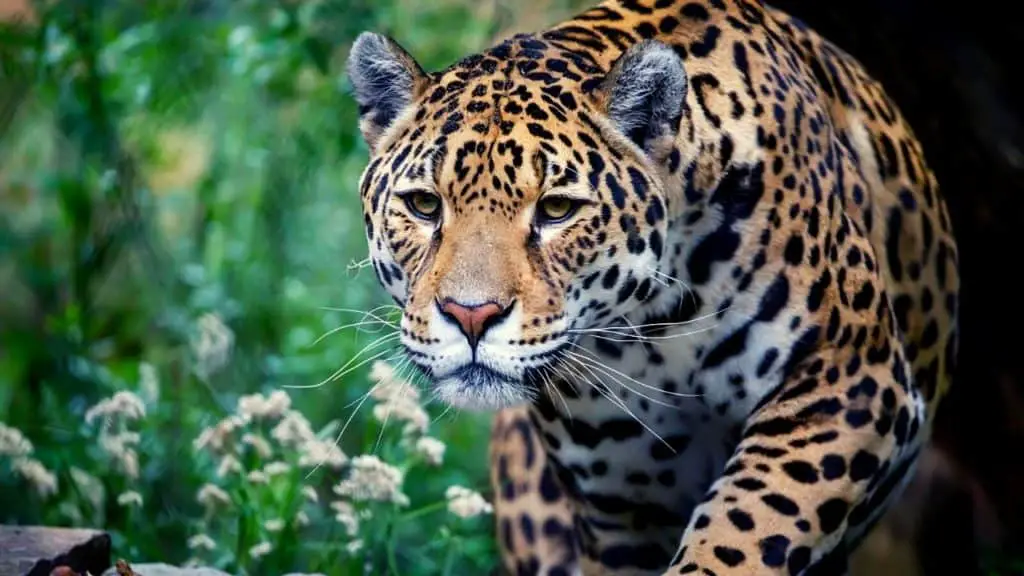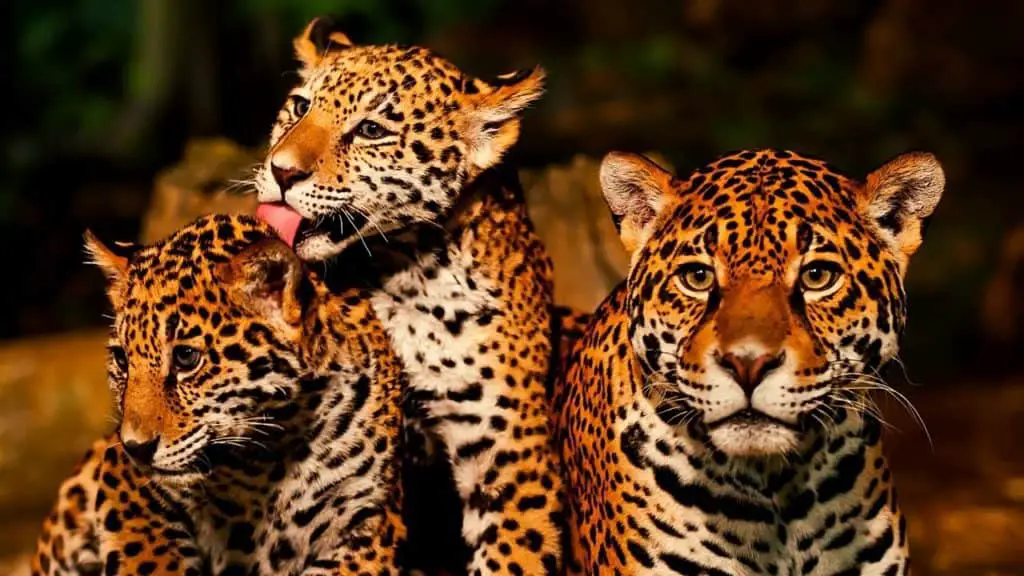Do jaguars make good pets? No, obviously not. They are endangered, have very demanding needs, and are illegal to keep in many states. They just can’t be compared to traditional house cats. Read on to learn more about what it would be like to have a pet jaguar.

Is it Legal to Own a Jaguar?
Jaguars, as well as panthers, are a threatened species, and the Convention on International Trade in Endangered Species of Flora and Fauna prohibits poaching and the unlawful commercial trade of jaguars and their body parts.
Additionally, the Captive Wildlife Safety Act prohibits moving certain exotic cats, including jaguars, across state lines and international borders.
Some states require a permit to own exotic cats, while others specifically forbid the ownership of exotic cats or jaguars as pets.
For example, in 20 states it’s illegal to own one as a pet. Montana and Nebraska are a couple of states that ban large cat adoptions outside of a zoo or wildlife rehabilitation center. In Oregon, exotic cats cannot be owned commercially or domestically.
In five US states, there are no regulations on owning wild exotic cats. Alabama is one of the states without regulation. In other states like Idaho, Mississippi, and Missouri (as well as a few others), you can only own a jaguar with a permit.
Commercial exhibitors can own exotic cats and jaguars in a few states where domestic ownership is not available. A few of these states include:
- Arkansas
- California
- Florida
- Montana
- Massachusetts
New Hampshire Jaguars Aren’t Domesticated

It’s important to note that jaguars are not domesticated like a household domestic cat. The species mostly lives and thrives in their natural habitat, far from human contact. Due to a jaguar’s unpredictable traits and potential for aggressive behavior, they are best suited for their own environment.
In rare rescue cases, these animals are taken into zoological environments and by trained professional animal caretakers. Even in these cases, jaguars cannot be tamed and require security measures to keep them and their caretakers safe.
Here are a few reasons you should not own a jaguar as a pet.
#1 Jaguars Are Too Dangerous
Jaguars have a powerful bite like lions. Their jaw is the strongest of all big cats. They often aim for the skull of their prey, and even a small bite to a human can be seriously injuring. It isn’t safe to own one as a pet for this reason.
#2 Jaguars Are an Endangered Species
Jaguars are in the “near-threatened” category of endangered species. Their population has diminished about 40% of their previous range historically. Jaguars that are purchased as pets are often taken from countries outside of the US as cubs, especially in South American countries. Many are taken from their mothers, which is distressing for the animals.
#3 Adopting Jaguar Cubs Is Illegal in Many Areas
Since adopting a big cat is illegal in many states in the US, it is best to refrain. Even if you have a license, caring for a jaguar as a pet requires extensive knowledge, access to a wildlife veterinarian, and a large variety of resources (food, water, and enrichment).
#4 Jaguars Are Dangerous

Jaguars have a history of attacking humans, with 20 deaths and at least 82 non-fatal attacks occurring in the United States and Canada between 1890 and 2001. They also attack domestic animals like dogs.
Jaguars have the most powerful bite force quotient of any big cat. When they do become aggressive, it’s with tremendous force.
When jaguars attack, they usually use a quick, crushing bite to their prey’s skull rather than going for the underbelly. They also make deep gashes with their sharp claws in their victims’ bodies, sometimes severing the spinal cord.
Many people don’t survive an attack. Those who do survive may be left with scars at best or lose brain function, bone and tissue at worst.
Even people who have raised jaguars from cubs have ended up hurt.
#5 Jaguars Require a Strict Carnivorous Diet
In the wild, Jaguars will pursue any animal they can find. Favorite prey includes the peccary and capybara. Other prey may include caiman, tapirs, and fish. They are even known to kill cattle.
In zoo settings, zookeepers feed their jaguars canned exotic feline food and occasional raw food like chicken necks or large bones. They also appreciate eating whole animals since they can extract vitamins and minerals from consuming all the parts of their prey.
Keeping up with the dietary needs of a jaguar can be expensive since a full-grown male can reach up to 200 pounds, requiring up to 8 cans of ZuPreem Feline Diet per day.
At current prices, it would cost you about $20 per day, $140 per week, $620 per month, and $7300 per year to feed a pet jaguar if you didn’t supplement with raw meat.
#6 They Have Demanding Housing Needs

When housing a jaguar, personal and public safety should be a top priority because of its dangerous nature.
A jaguar needs an outdoor enclosure that is a minimum of 1500 square feet and a shelter that is a minimum of 6.3 feet long x 5.4 feet wide x 7.5 feet high. Keep in mind that this is a minimal habitat size, and the animal will be much happier in the largest space you can give it.
The fencing should be steel chain link fencing that you securely fasten to a cement floor. If you use a dirt floor, there should be underfencing that extends at least 3.5 feet into the cage that you cover with dirt and gravel.
The enclosure must have a ceiling, and the fencing needs to attach to the ceiling so that the jaguar cannot climb out.
The housing should also include:
- Space to roam: With an animal that’s accustomed to roaming in the wild, more space to roam beyond a minimum-sized shelter is preferable.
- A stall: The stall should have a way to secure the jaguar for cleaning the enclosure or for veterinary visits
- Elevated ledges or perches: Ledges, high perches, or trees with sturdy branches provide the jaguar with a place to lounge and sleep.
- Logs: Logs give them a place to sharpen their claws.
- Dense vegetation or other hiding places: Hiding places provide the jaguar with a more natural-feeling environment.
- Escape Prevention: The jaguar’s habitat should contain double padlocked gates. Having six feet separating the two gates will minimize the escape chance.
- Lack of public access: It’s essential that the public not have access to the jaguar’s enclosure, so a secondary fence may be necessary. Warning signs for the public are also a good idea.
#7 There May Be No Jaguars for Sale in Your Area
Since there are laws restricting the transportation of jaguars across state and international lines, you may have difficulty finding one for sale that you can access at any cost.
Some breeders may have jaguar cubs that you can buy, but you may not be able to get them across state lines to your home.
If you can find one in your state to buy, the price will probably be between $2300 and $3300.






